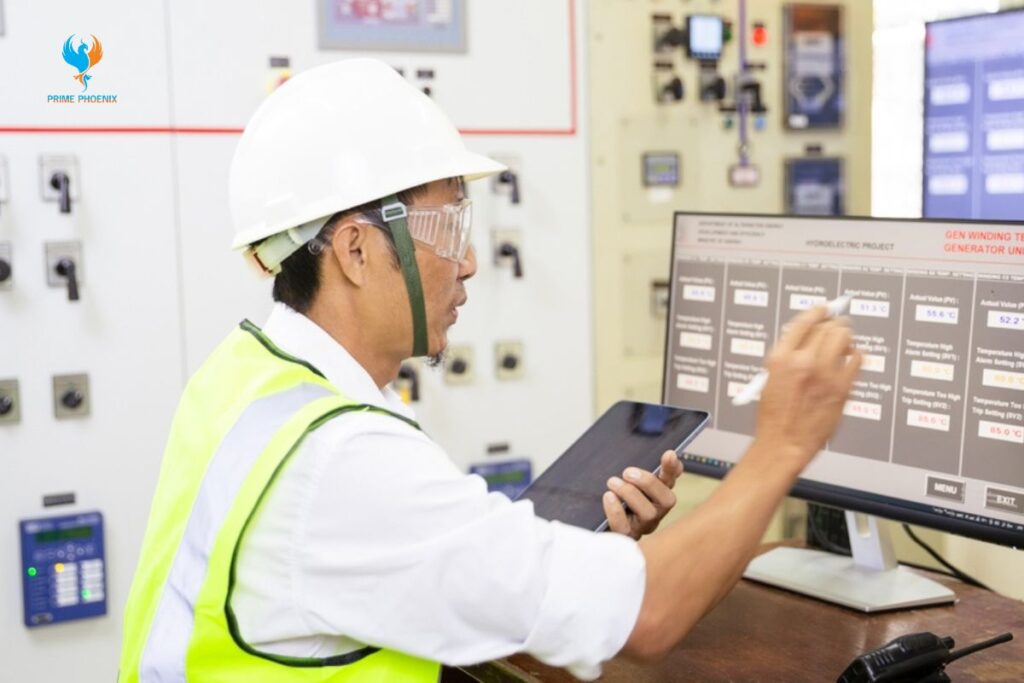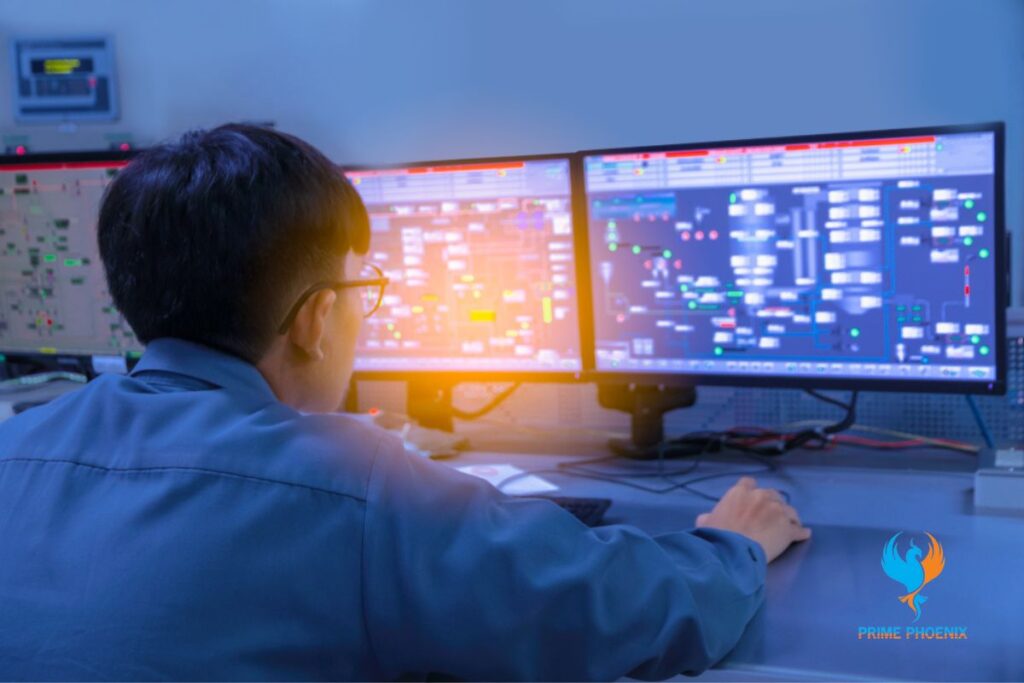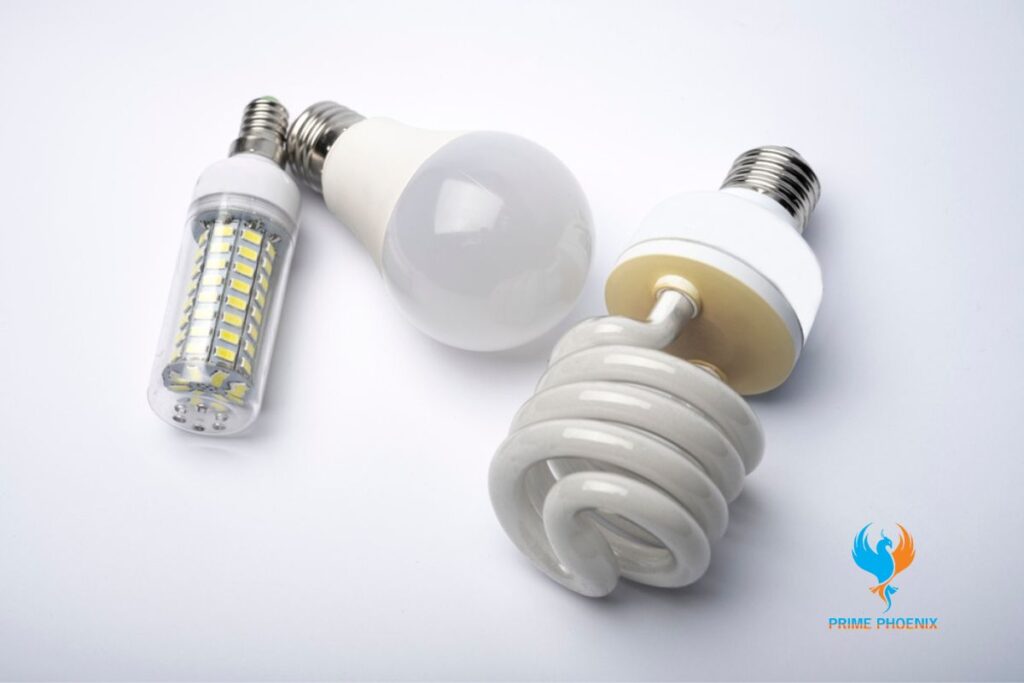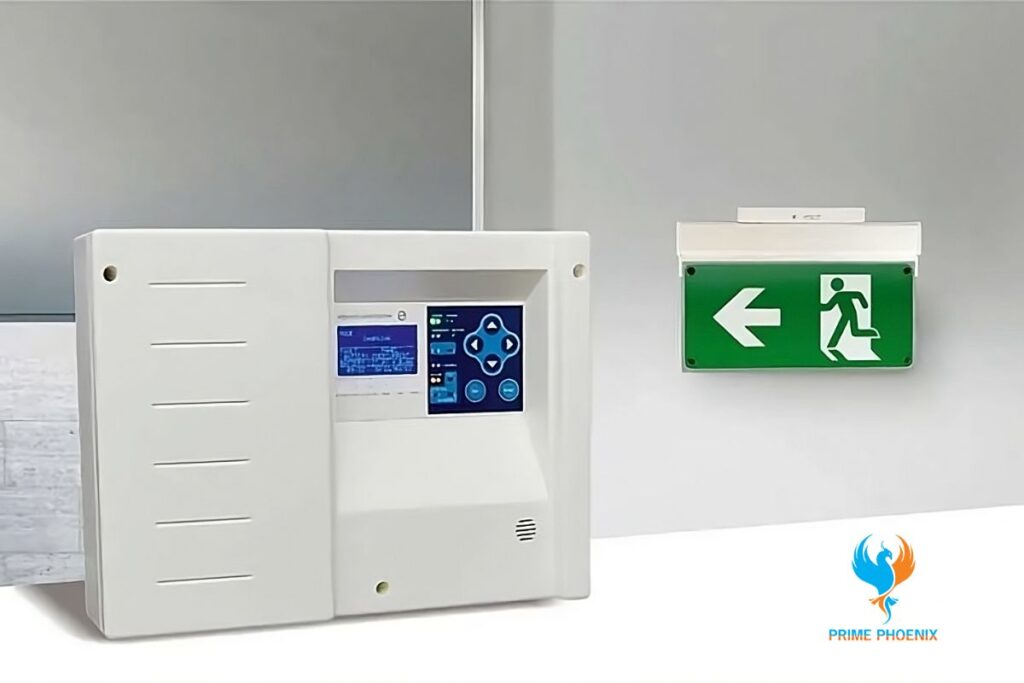- Ras Al Khor Industrial Area 2
- +971 4 330 2170
- +971 547919584
Safety should always come first in commercial buildings like offices, malls, hotels, and hospitals. One crucial aspect of safety is ensuring emergency lighting works properly in case of power outages or other emergencies. An emergency light monitoring system can provide peace of mind that exits and emergency equipment remain illuminated for evacuation and response. As experts in fire protection, we at Prime Phoenix advocate for these systems to protect lives.
Imagine a power outage strikes during working hours at a busy office tower. Without properly functioning emergency lights, chaos and danger could happen as employees and visitors try navigating dark stairwells to safety. Emergency egress lighting serves a vital purpose of guiding people to emergency exits clearly and calmly. A monitoring system avoids such worries by continuously checking emergency lights are operational. If one light fails, the monitoring equipment immediately alerts building managers for fast repairs.

Compliance with fire and safety codes also necessitates emergency lighting receives regular inspection and maintenance. Authorities like the Dubai Civil Defense conduct periodic reviews of life safety provisions at commercial facilities. Having electronic documentation from an automated monitoring system simplifies demonstrating lighting functionality meets regulations. Paper-based manual checks risk incomplete records and lapses in timely replacements of expired bulbs or batteries fueling generators. Remote electronic monitoring offers round-the-clock watch without onsite inspection.
Key Benefits of Emergency Light Monitoring System
A properly designed emergency light monitoring system provides numerous advantages for facilities managers and building owners. Primary among these benefits is around-the-clock surveillance of emergency lighting functionality.

Around-the-clock Surveillance
A properly designed emergency light monitoring system provides numerous advantages for facilities managers and building owners. Primary among these benefits is around-the-clock surveillance of emergency lighting functionality.
Streamlined Compliance
Additionally, automated monitoring streamlines regulatory compliance activities through detailed historical performance records.
Furthermore some of the other benefits include the following:
- Ensures emergency egress remains illuminated and usable at all times
- Immediate alerts on failed or malfunctioning lights for rapid servicing
- Remote access allows monitoring from any location via internet or app
- Battery status and charging conditions inspected continuously
- Historical performance records available for audits
A successful monitoring system integrates emergency lighting fixtures with intelligent monitoring sensors and web-based software. Sensors attach to individual lights or circuits testing output levels regularly. Data is transmitted via a wired connection to a control panel that logs results. Status reports and alarms emit from Internet-connected panel to subscribed mobile devices or email for anytime oversight. Software dashboards display lights in green as functional or red when requiring maintenance.
Factors to Consider Choosing a Monitoring System
When selecting an emergency light monitoring system, several important considerations factor into identifying the optimal solution. Emergency lighting provides illumination for occupants to safely exit a building during a power outage or other emergency situation. A monitoring system helps confirm all emergency lights are operational and properly maintained to protect lives in the event of an emergency.

Compatibility with Infrastructure
When selecting an emergency light monitoring system, several important considerations factor into identifying the optimal solution. Key attributes to evaluate include compatibility with existing infrastructure and ease of installation.
Integration Capabilities
Integration capabilities with other building systems also impact the decision along with software features and service support.
Monitoring Technologies
Wired and Wireless Options
There are a variety of technologies used to monitor emergency lighting systems. Hardwired systems use electrical cabling to connect monitoring devices directly to fixtures and back to a central control panel. Wireless monitoring systems eliminate cabling using radio frequency or wireless protocols instead. But we only encourage wired monitoring systems as wireless systems are not as effective as wired monitoring systems. We don’t take chances where life threat is concern.
Built-in Monitoring Fixtures
Battery-backed light fixtures typically include monitoring capabilities built-in. Self-contained units perform automatic self-testing and transmit data through integrated radios.
System Components
Monitoring Sensors and Control Panels
Standalone monitoring sensors also exist for attaching to existing lights and circuits via wiring or adhesive strips. Monitoring control panels act as the local processing hub, often housed in electrical rooms.
Software Platforms
Real-time insight and historical metrics are accessed through monitoring software available as browser-based web applications or dedicated PC programs.
Various Types of Emergency Light
There are a variety of emergency light fixtures in use including LED, fluorescent, and incandescent options. LED lights have become increasingly prevalent due to energy efficiency and longevity. A single LED bulb can operate for over 10 years compared to 1 year or less for some fluorescent and incandescent bulbs. The table below compares common fixture types:
Fixture Type | Efficiency | Lifespan | Cost |
LED | High | 10+ years | Moderate-High |
Fluorescent | Moderate | 2-3 years | Low-Moderate |
Incandescent | Low | 1 year or less | Low |
Contact us at Prime Phoenix to discuss your emergency lighting monitoring system needs and an on-site assessment. We can evaluate your current setup and recommend the best monitoring solution for your unique building and budget. Let us ensure life safety remains the top priority through reliable emergency egress illumination and around-the-clock vigilance.

Remote Access and Reporting
Anytime Anywhere Data Access
Systems with remote capabilities using network or cellular connections allow anytime anywhere data access via computers and mobile apps. This allows off-site monitoring of light status.
Automated Reporting
Automatic notifications keep staff promptly updated on faults or maintenance needs through email, text, or audible alarms. Periodic automated reports also simplify audits and compliance documentation.
Installation and Commissioning
Integration with Existing Systems
Proper planning ensures seamless integration of new monitoring devices and software with existing emergency luminaires and building systems.
Commissioning and Training
Thorough commissioning by trained technicians verifies all components function as designed. Training staff on software usage optimizes ongoing operations.
Evaluating Monitoring Solutions
Compatibility Evaluation
Contact us for an on-site evaluation of your facility to assess compatibility with current fixtures and infrastructure.
Customized Recommendations
We provide customized recommendations on the best solution based on your unique requirements and budget.
Maximizing Value with Monitoring
Proper emergency lighting is crucial for safety in many facilities like hospitals, schools and office buildings. Routine checking and maintenance helps ensure emergency lights will function properly in the event of a power outage.
In summary, strategically planned emergency light monitoring brings value through:

- 24/7 active illumination confirmation
- Immediate alerts on faults or failures
- Streamlined regulatory fulfillment
- Remote access to current conditions
- Historical performance archives
Contact Prime Phoenix for a Safety Assessment
With decades of experience in the fire and life safety industry, Prime Phoenix’s team of experts can perform a comprehensive assessment of your facility’s emergency lighting needs. We will:
- Inspect all emergency lighting fixtures and documentation
- Verify locations meet egress and exit sign placement codes
- Test illumination levels and battery backup functionality
- Review maintenance and inspection records
- Recommend upgrades or repairs as needed
With our assessment, you gain assurance that emergency light monitoring systems uphold strict safety standards.
FAQs about Emergency Light Monitoring System:
Q: How long do emergency lights need to operate?
A: Codes require 3 hours of operation for most applications though some critical areas necessitate longer durations.
Q: What kind of batteries power emergency units?
A: Lithium battery batteries are commonly used as they charge while connected to AC power and provide reliable performance.
Q: How often do batteries require replacing?
A: Typical lifespan ranges 5-10 years depending on usage, discharge cycles, and proper maintenance. Regular performance testing helps maximize service life.
Q: Can the system provide battery testing?
A: Yes, quality monitoring systems include automatic and manual battery testing to check condition and replacement needs. Test results track over time for more accurate assessment.
Q: Are wireless or wired systems preferable?
A: Wireless simplifies installation while wired ensures highest reliability, performance, and longevity. We only use wired monitoring systems as it is a matter of life threats.
Protect Lives with Confidence
Make safety assurance your top priority. Contact Prime Phoenix to schedule an assessment and personalized emergency light monitoring system proposal. We strive to exceed expectations with our proven solutions, craftsmanship, and personal approach to customer care. Your satisfaction is our driving motivation.
Rely on Prime Phoenix for industry-leading fire and life safety equipment, including emergency light monitoring systems that protect lives around the clock through reliable illumination and proactive monitoring. We look forward to a conversation on how we can help your property achieve the highest levels of safety compliance.
